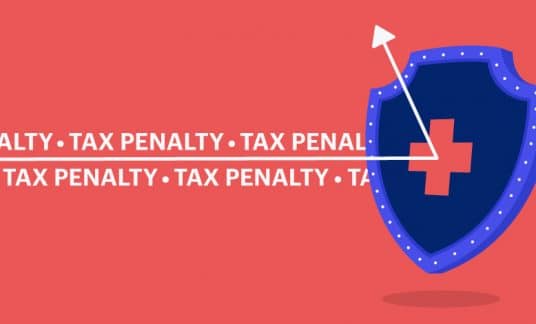With zero-based budgeting, you must justify all expenses for every task and activity. Nothing is spent without having a clear definition of the purpose for using the funds and the return expected.
Unlike conventional budgeting, zero-based budgeting (ZBB) starts each year with a clean sheet. Every expense account and use of funds is reset to zero. Then the budgeting begins.
Let’s see how ZBB works and if it would be right for your business.
What Is Zero-Based Budgeting?
Typically, most business owners begin the new year by tweaking their previous year’s budget. They might add 3% to account for inflation in costs of materials and services and maybe add another 5% for wage raises to employees. Any cost inefficiencies that existed in the previous budget gets carried forward into the new budget. Previous year’s budget numbers don’t get analyzed or checked to make sure they’re still relevant to the company’s strategy.
Maybe some thought is given to cutting costs in a few expenses, but that’s the extent of the planning process.
ZBB doesn’t accept that approach.
Conversely, zero-based budgeting says that no expenditure of funds is allowed until the business owners and managers have validated its purpose, projected an economic return and determined the move is in alignment with the company’s goals.
Zero-based budgeting doesn’t rely on assumptions made for past activities or historical data. Simply because a task was done a certain way in the past doesn’t mean it will continue to be so in the future.

How Does Zero-Based Budgeting Work?
Zero-based budgeting starts with a forecast of the company’s revenue or expected funding for the next budget period. One goal, for example, from this forecast might be to increase the company’s revenue by a certain percentage.
After the top-line sales objective is set, you can then work to determine what resources will be needed to reach that goal. One need might be to hire additional sales staff and maybe later to add more warehouse personnel as sales pick up. Another need could be to secure additional financing to support an increase in inventory and accounts receivable.
With these goals and needs identified, you can then start to construct a budget that will determine the amount of money needed in the various departments to reach the organization’s objective. Note that in no case does the creation of a new budget rely on the historical figures from previous years. Every line item of expense starts from zero.
This doesn’t mean that you always have to start from scratch, but it does mean you have to step back and take a look to make sure expenses are aligned with the revenue projections.
Advantages of Zero-Based Budgeting
Zero-based budgeting takes time and can be complex, but it has several advantages over the conventional budgeting process.
- Uses a cost-benefit analysis – Zero-based budgeting looks for more cost-effective ways to execute activities. Tasks and activities get revisited each year to determine if the company is still following the most cost-efficient method.
- Eliminates wasteful activities – A review of employee activities may find a duplication that has gone unnoticed. A zero-based analysis that reviews job descriptions may reveal several people performing the same activities. These redundancies can be eliminated.
- Discourages budget inflation – Unlike conventional budgeting, zero-based budgeting doesn’t arbitrarily add baseless percentages to previous spending budgets, like adding 3% every year to cover general inflation. Every expense must be justified based on priority and need.
- Prioritizes resources – Each line item of expense must justify its existence and have a vital importance to the company.
- Optimizes business processes – Each process gets analyzed to find the most cost-effective way to perform the activities.
- Increases communications – Constructing a zero-based budget gets the attention of management and employees, who become more involved in discussing the activities and offering ideas for improvement. Employees will be more committed to the program when they are made part of the planning process.
- Supports company mission – The process of a zero-based budget looks at the company’s activities and makes sure they are aligned with the mission.
Disadvantages of Zero-Based Budgeting
Zero-based budgeting has several disadvantages that make business owners reluctant to go through the process.
- Can be time-consuming – Evaluating each task and activity takes time to go into the detail necessary to determine their value to the organization, costs and consideration of alternatives.
- Some processes are difficult to quantify – While manufacturing processes have standard costs for labor and materials, other activities, such as human resources, don’t have such quantifiable metrics.
- Can be disruptive – Creating a zero-based budget requires that managers and employees take time away from their daily activities to attend meetings and prepare reports.
- Can lead to gamesmanship – Some managers may try to bias their analysis and budget reports to increase the allocation of funds to their areas.

What Are the Zero-Based Budgeting Steps?
Follow these steps to create a zero-based budget:
Start with a blank sheet – Each line item of expense will have a beginning balance of zero. You can use figures from previous budgets as a reference, but nothing is carried forward to the new budget.
Identify a task – Separate your business’s activities into separate tasks. For example, you might have departments for sales, manufacturing, customer service, purchasing, shipping and human resources. The functions of each department could then be broken down into individual tasks.
Evaluate each cost area – Determine if the activity is vital and should be included. Nothing is assumed as essential just because it has existed in the past.
Justify the task or activity – Identify areas that are relevant and should be evaluated for cost-effectiveness. You may find some activities that have continued to exist — they’ve become legacies — and are no longer necessary going forward.
Find alternatives to accomplish each task – Could some activities be outsourced or kept in house? Do you need a human resources person on staff or could you use an outside professional employer organization?
Find ways to streamline – Look at how the tasks are performed. Can the processes be standardized or automated?
Create the budget – Start putting the numbers in. How much money would it take to perform each task or activity? How many employees will be needed and how much will they be paid? What materials need to be purchased?
Execute the plan – Introduce the plan to managers and employees. Explain each person’s responsibilities and the evaluation process with performance metrics.
Monitor the results – Track the performance of each activity and look for deviations from the targets to take corrective actions when necessary.
Practical Examples of Zero-Based Budgeting
Here are a couple of examples for zero-based budgeting:
Example 1
A widget maker has typically sold its products to brick-and-mortar locations. The company has a $2 million marketing budget using print and trade journal advertising and has a sales force making regular calls to the owners of these retail outlets.
However, the end-users for the company’s products are increasingly purchasing the widgets through their website. Online sales now exceed sales to physical stores. Allocation of the company’s marketing dollars need refocusing.
Unfortunately, the company will have to lay off several members of its sales staff and start spending more money on upgrading its website and promoting its products on other company websites that sell related products.
The good news is that the company’s marketing budget can be reduced to $1.2 million since it has fewer sales staff and doesn’t have to support travel expenses.
Even better, the company’s gross profit margin is higher because now it’s selling at higher prices to end-users rather than selling at wholesale prices to physical retail stores.
Example 2
The widget maker has been outsourcing a key part of its product to the same supplier for several years. However, the supplier has been increasing its price to the widget maker by 4% each year. It’s time to reassess this relationship.
Starting with a zero-cost basis, management finds that it could hire a machinist to make the product in-house, purchase the equipment needed and take advantage of some unused warehouse space to set up the operation. With labor and material expenses, the company finds the cost for making the product in-house would be 35% less than the price from its long-term supplier. Management makes a decision to begin in-house manufacturing and terminates its relationship with the outsourced supplier.
To ZBB or Not to ZBB?
Going through a zero-based budgeting process each year is tedious. It takes a lot of time from management and employees.
Nevertheless, the competitive playing field is constantly changing and business owners need to continuously reevaluate the efficiency of their operations and allocation of funds.










